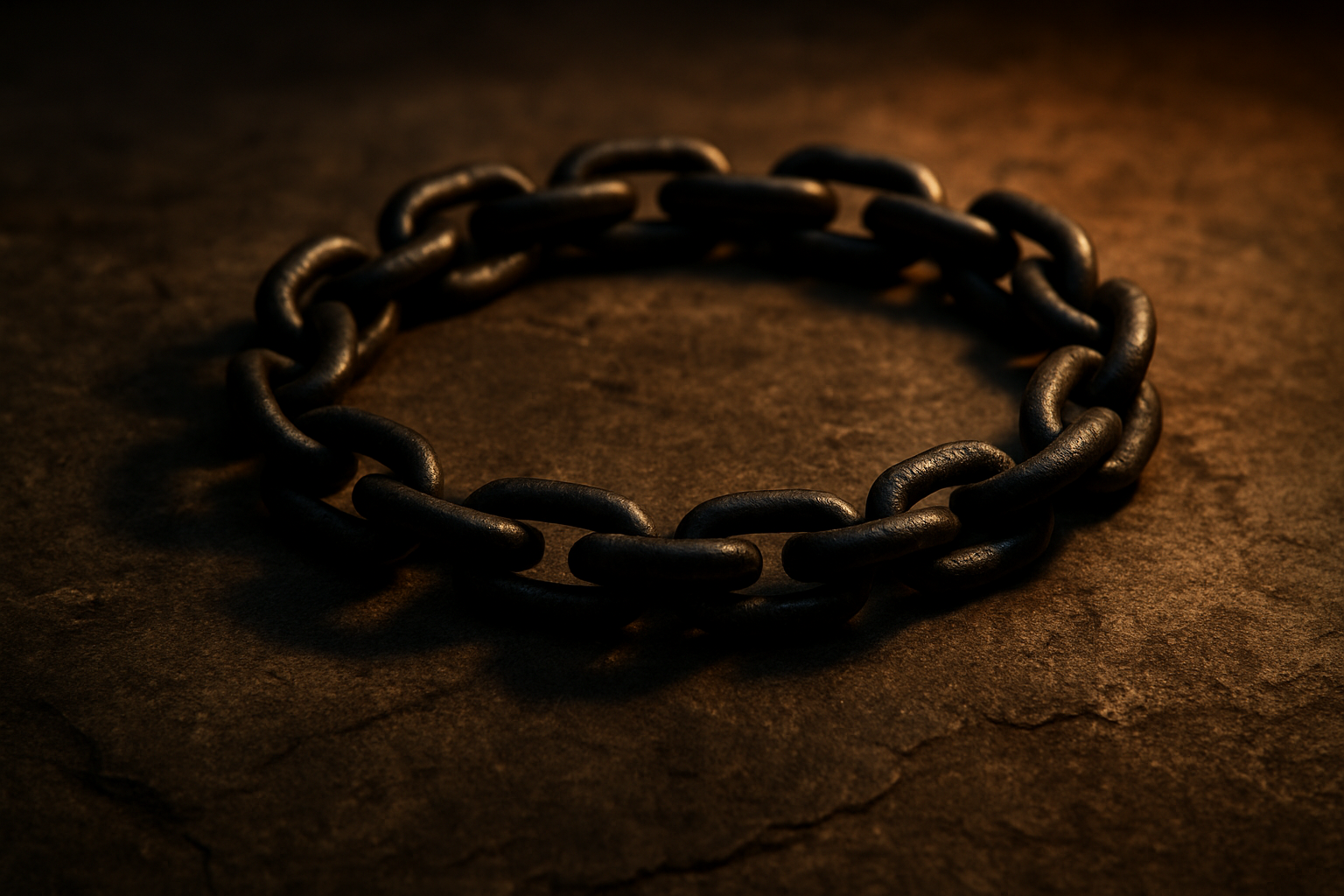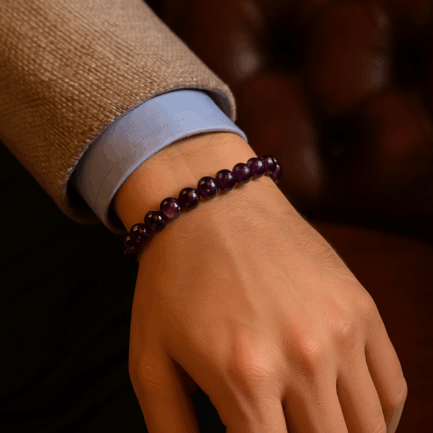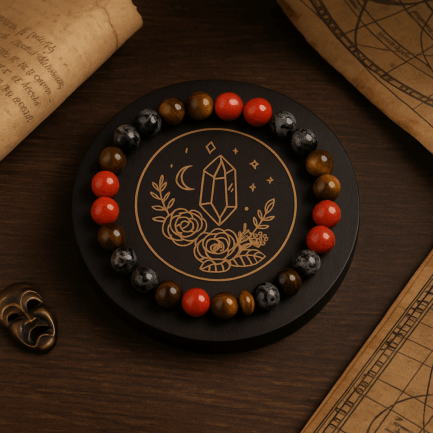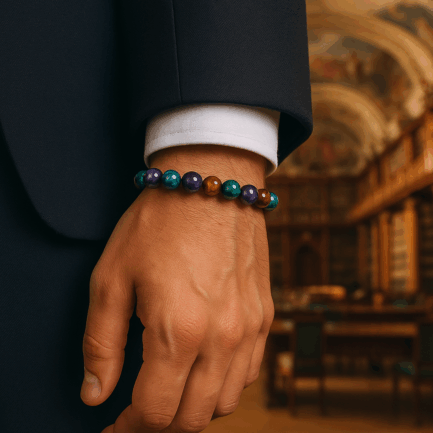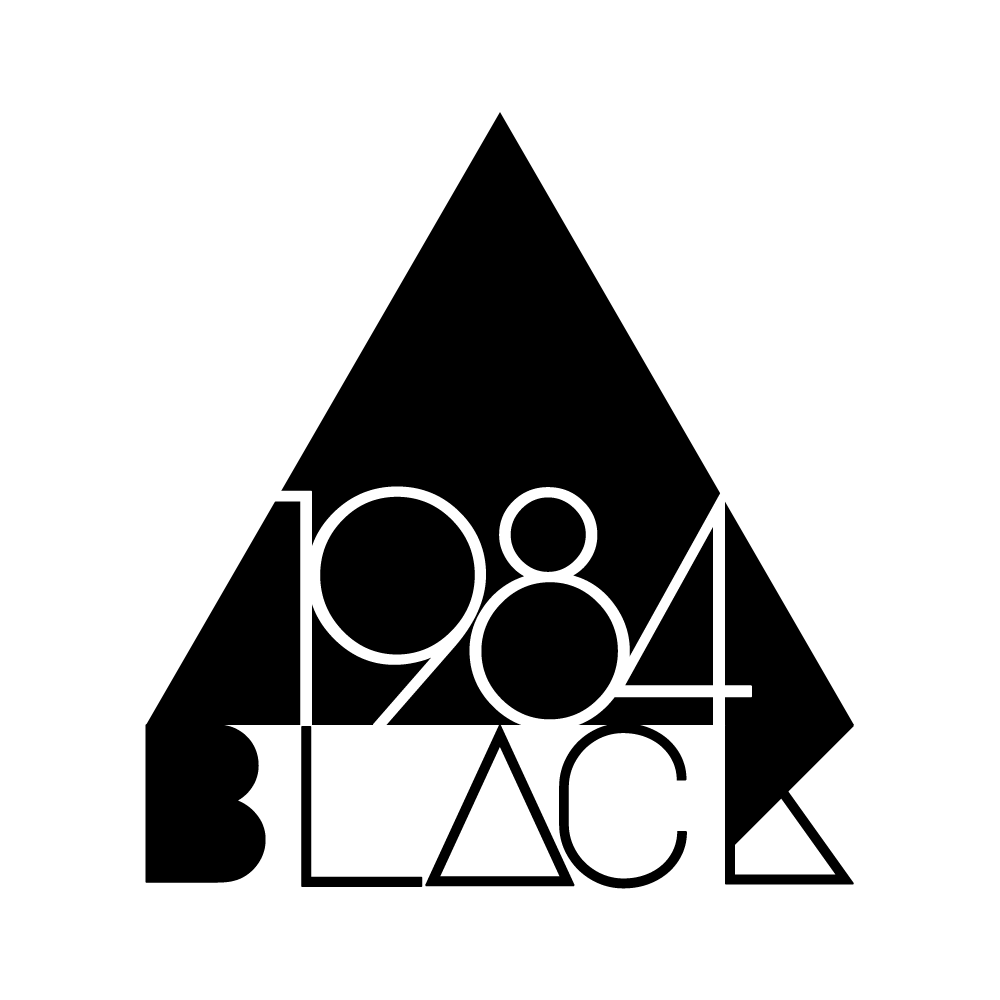It begins as a single link.
Then another. And another.
Each one dependent on the last,
forming a line that is not a path, but a tether.
The chain does not move forward. It holds.It is a symbol of contradiction: connection and confinement.
Bond and burden. Power and restraint.Whether wrapped around the wrist, draped around the neck, or hidden beneath fabric;
the chain speaks before the wearer does.And what it says depends on who is listening.
The Origins: From Bondage to Brotherhood
The chain has always had weight, literal and symbolic.
In antiquity, chains were tools of punishment. Shackles. Restraints. Iron reminders of lost freedom. But the same object, worn differently, became something else. A medal. A collar of office. A link to lineage, to fraternity, to oath.
In the Middle Ages, chains of gold were worn by those sworn to a cause; not as decoration, but as declaration. Orders of knighthood, religious brotherhoods, secret guilds. The chain marked not ownership, but allegiance.
What binds you doesn’t always imprison you. Sometimes it defines you.
Worn or Carried: A Statement of Attachment
A chain worn around the neck is a gesture of invitation. Or control. A chain worn on the wrist may be restraint — or readiness.
Material shifts meaning.
- Gold suggests continuity, ritual, reward.
- Steel implies resistance. Defense. Permanence.
- Blackened iron offers no illusion. It is weight without apology.
To wear a chain is to ask: What am I connected to?
A person? A promise? A memory? A lie?
To wear a chain is also to ask: What would I do to break it?
Chains in Style and Silence
Chains do not shout. They whisper with weight.
In style, a chain can interrupt or connect. Link a collar. Secure a cuff. Hold a pendant meant to rest against the heart or never be shown at all.
At 1984.black, we do not treat the chain as accessory. We treat it as punctuation. A pause. A reminder that no object — or person — stands entirely alone.
Some chains are forged.
Others are chosen.
The difference is everything.
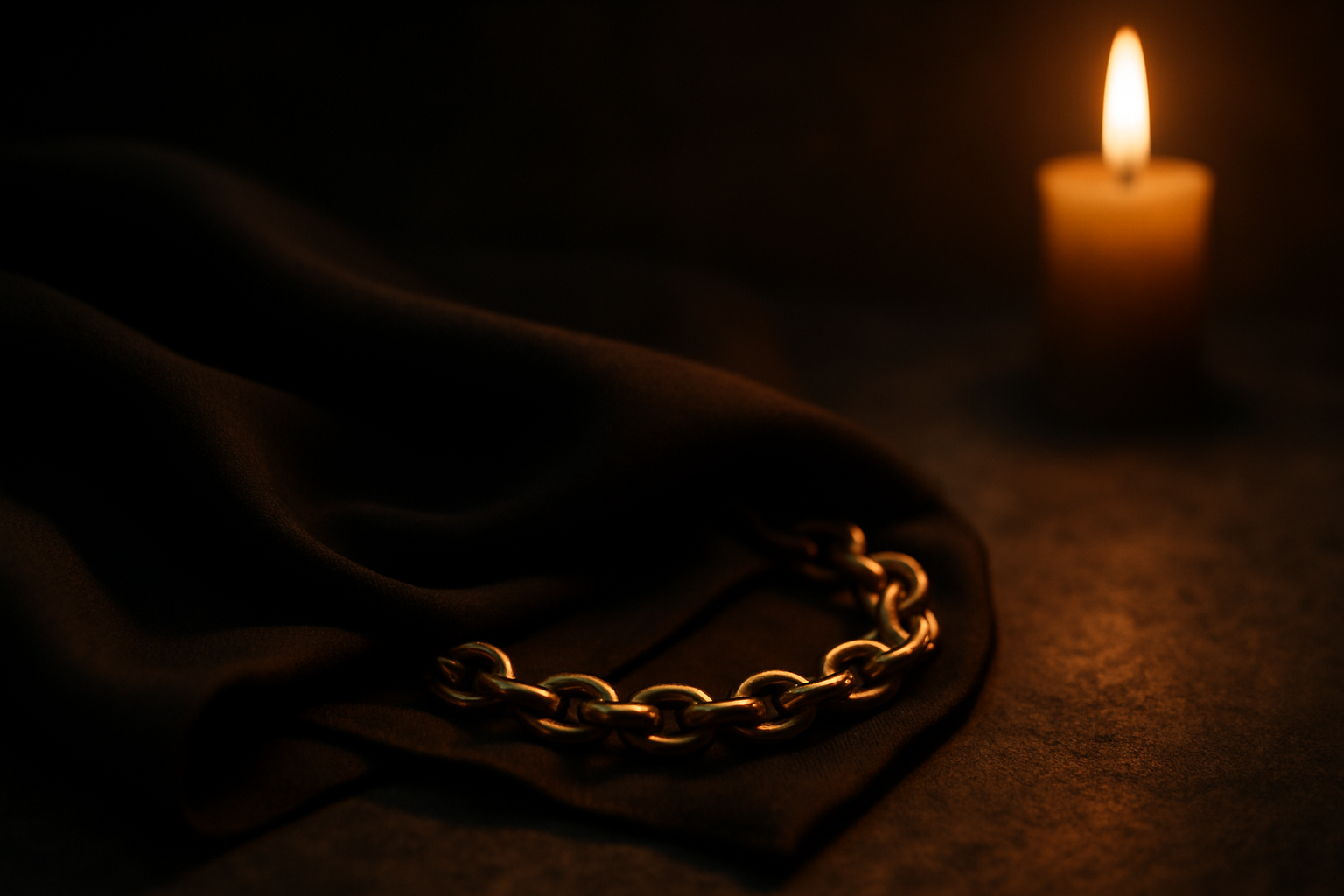
Hidden Facts & Lesser-Known Connections
-
In Freemasonry, the “chain of union” represents fraternity; each member a link in an unbroken circle.
-
In West African traditions, chains symbolize ancestral connection; both the weight of heritage and the strength of continuity.
-
In medieval Europe, the “collar of esses” was a livery chain signifying loyalty to the crown, often worn during ritual court ceremonies.
-
In psychological terms, “chained associations” reflect thought loops: cycles of meaning that bind and shape perception.
-
In metallurgy, chain-making requires the precise balancing of strength and flexibility; too rigid, and it breaks; too soft, and it fails to hold.
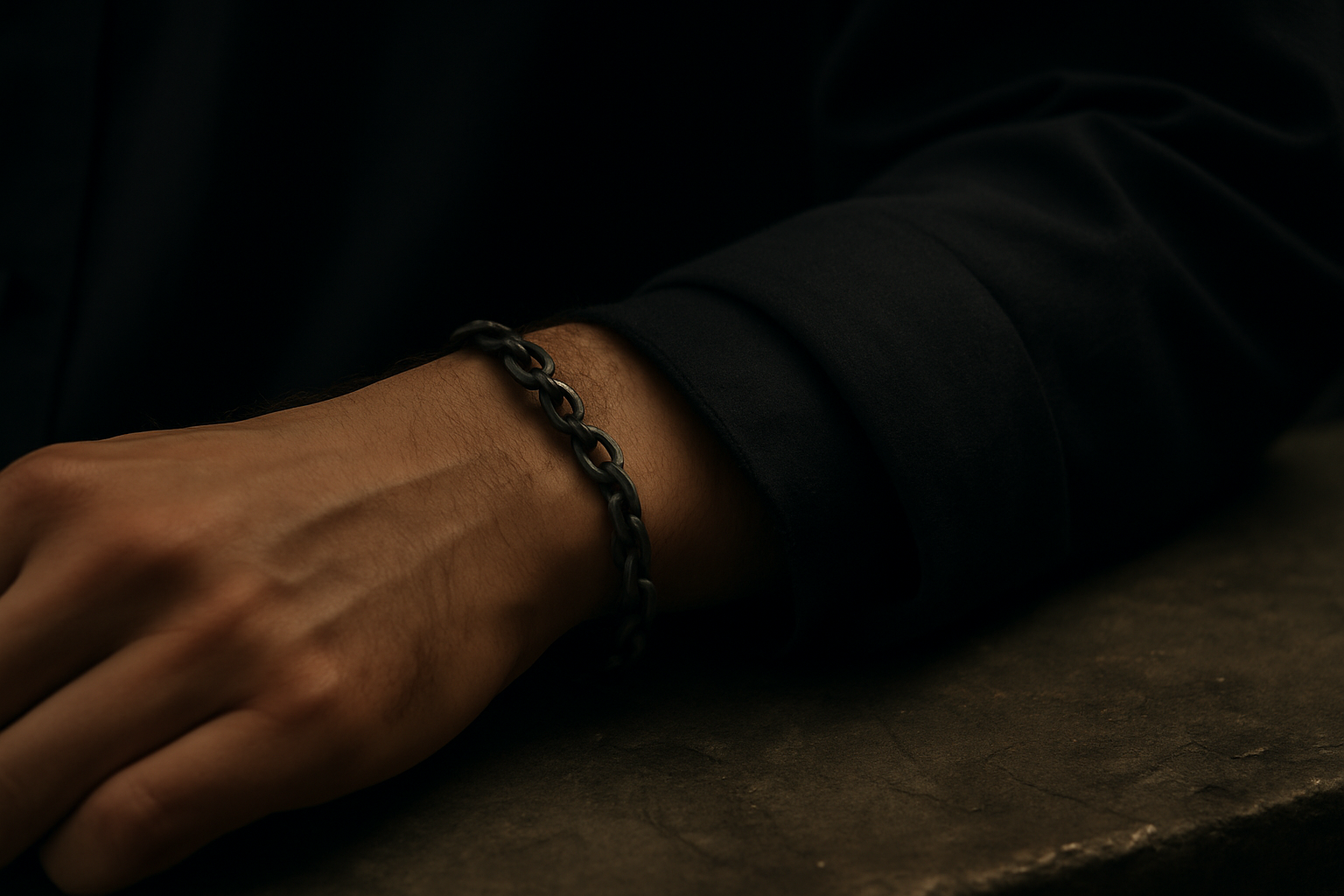
Closing Reflection
To the untrained eye, a chain is just metal.
To the initiated, it is a question.
What are you linked to?
What holds you?
And is it strength — or surrender — that keeps you from walking away?Every chain tells a story.
Some of loyalty.
Some of loss.
Some still waiting to be unlocked.At 1984.black, we do not glorify chains.
We examine them.
We wear them deliberately.

